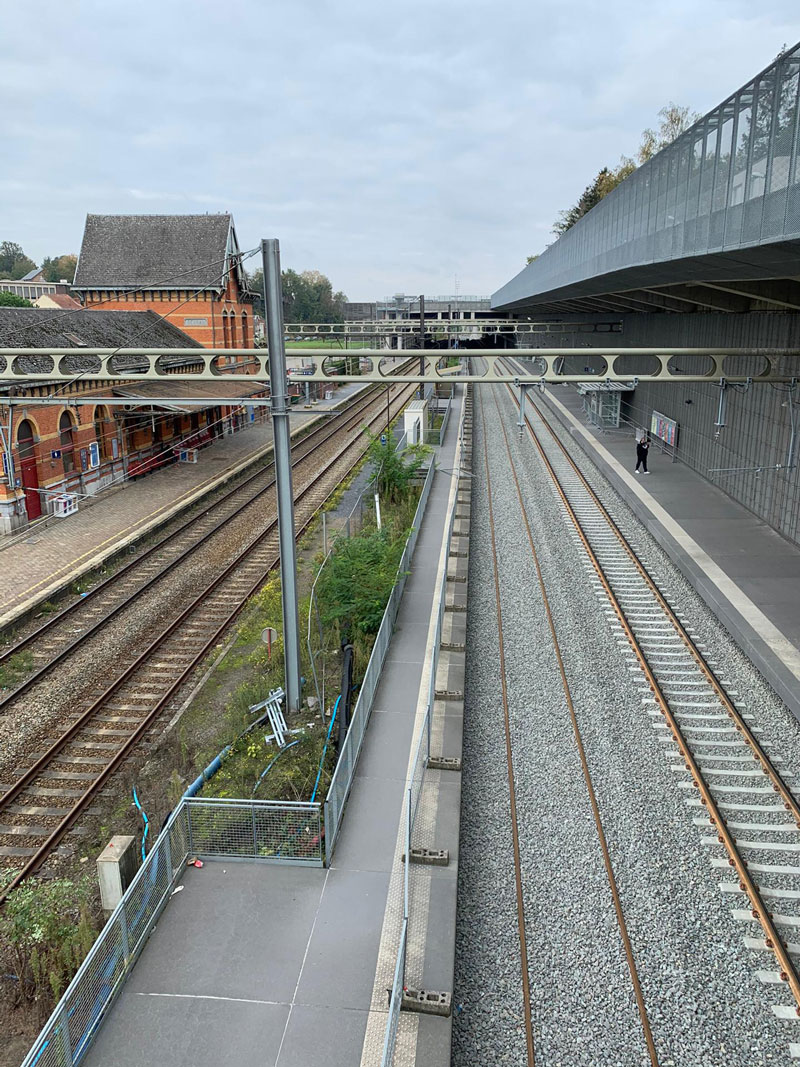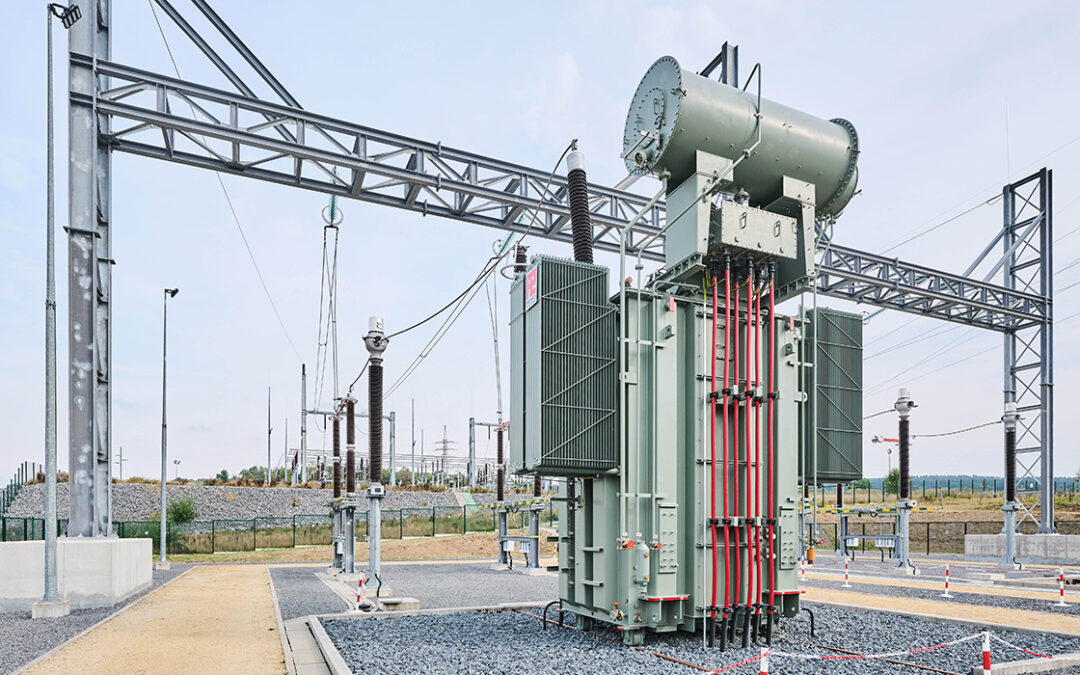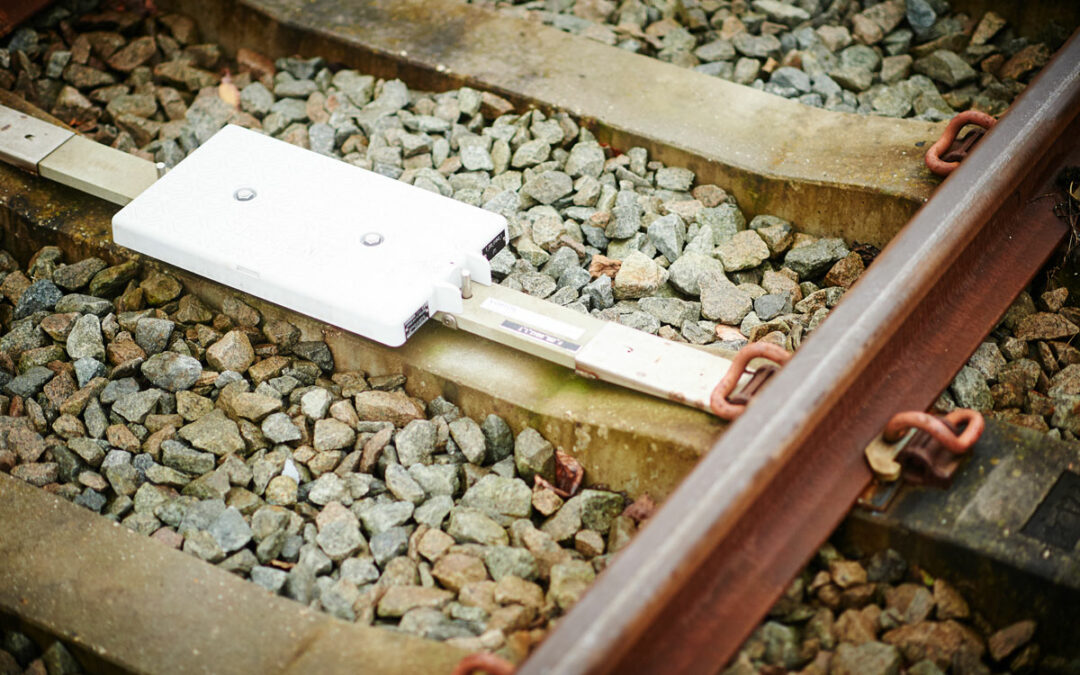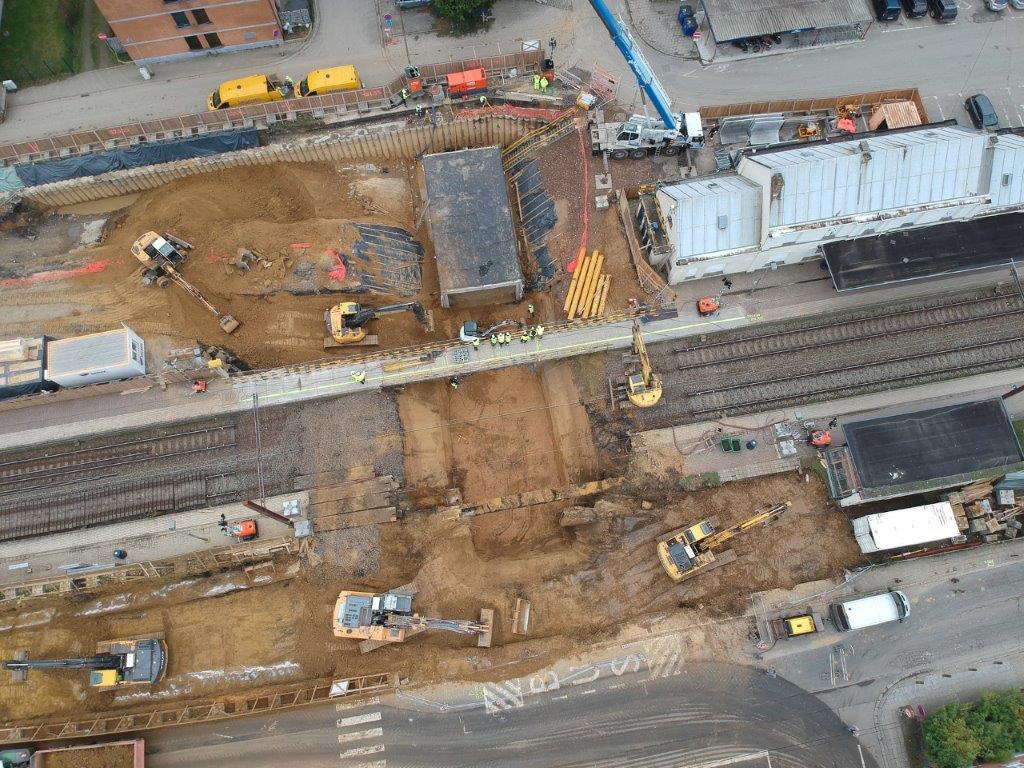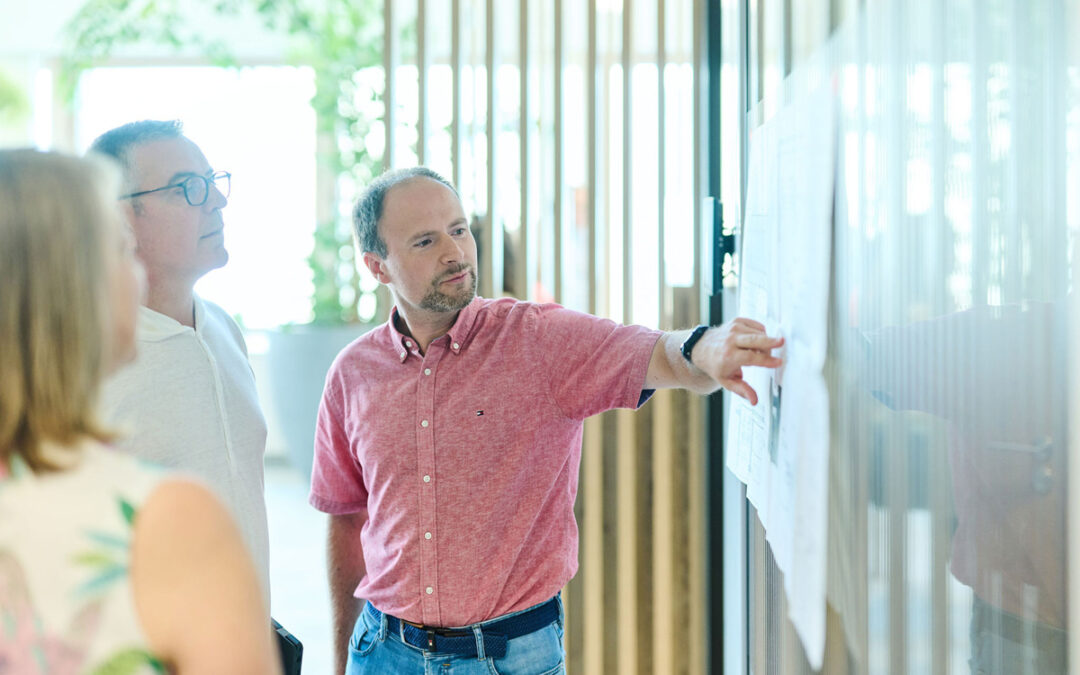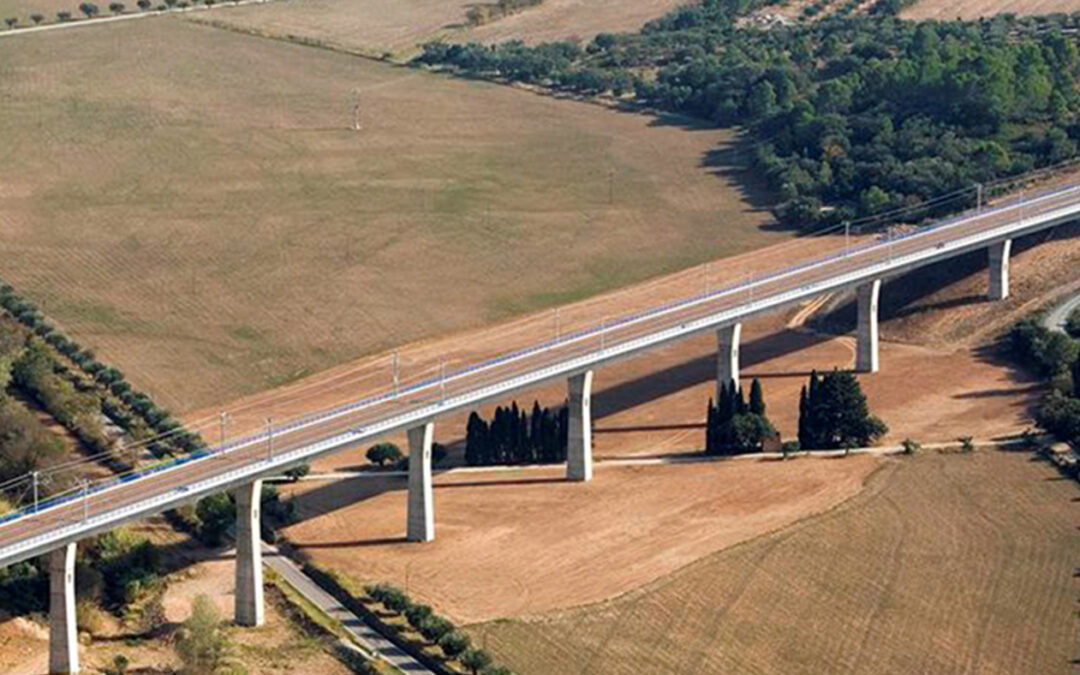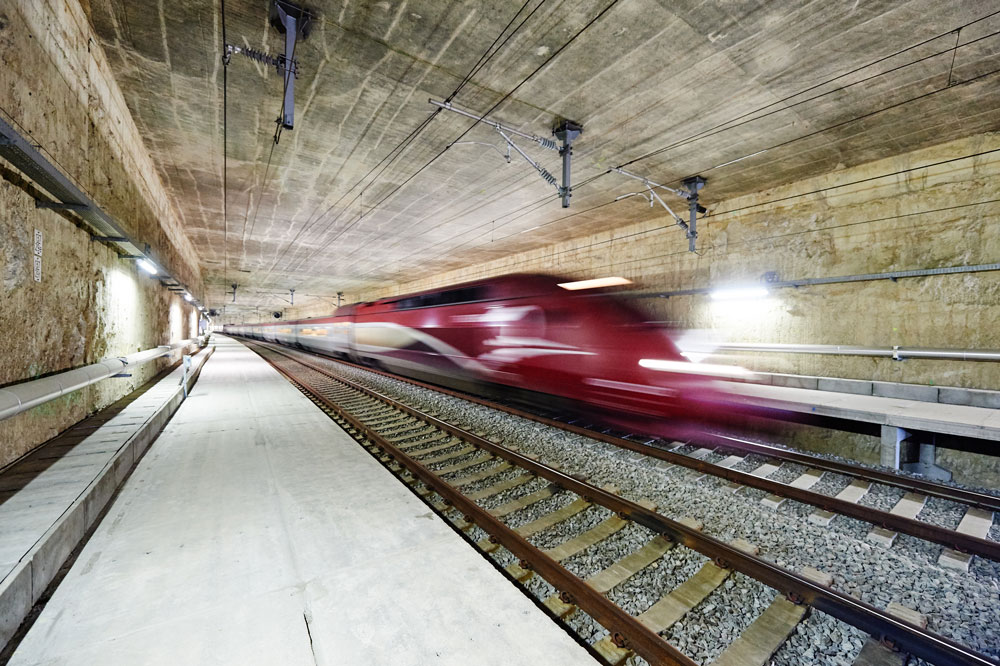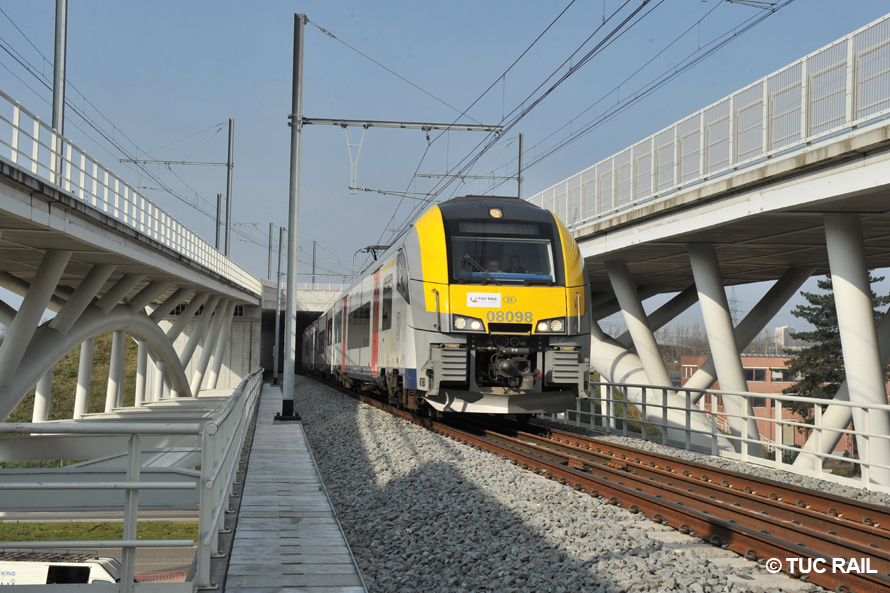Brussels Regional Express Network (RER)
The Regional Express Network (RER) program aims to expand capacity on the main rail axes to and from Brussels through the construction of 8 new railway lines and better integration with other means of transport (intermodality). This will significantly improve mobility in a 30 km radius around the capital.
As part of this gigantic program, the new lines have been designed with great attention to eco-design and the environment, i.e. by trying to avoid expropriations as much as possible, seeking construction and logistics solutions with minimal impact on nature and local residents, etc.
Our mission
The program also includes the construction of special structures on listed viaducts, the construction of a multimodal station under the European quarter of Brussels, new stops along the lines, etc. Consequently, special attention had to be paid to the phasing of the works and to maintaining the operation of the existing lines.
TUC RAIL was entrusted with the project management and the complete supervision of the realisation of the project and carried out the following tasks :
- Overall management of the project and sub-projects.
- Coordination and management of study activities: all studies (from preliminary studies, through preliminary design to detailed design) related to civil engineering and all railway equipment. Outline plans, detailed plans, technical specifications, calculation notes, bills of quantities, quantity and budget estimates, planning, etc.
- Geological, technical-environmental, geotechnical, hydraulic and hydrogeological studies.
- Management of interfaces with all key internal and external stakeholders of the project.
- Drafting of specifications in accordance with public procurement rules.
- Follow-up of the works, with management of functions related to railway safety and driving of work trains.
- Assistance with the acceptance of the works.
- Certification and transfer of the installations to the railway infrastructure manager.
